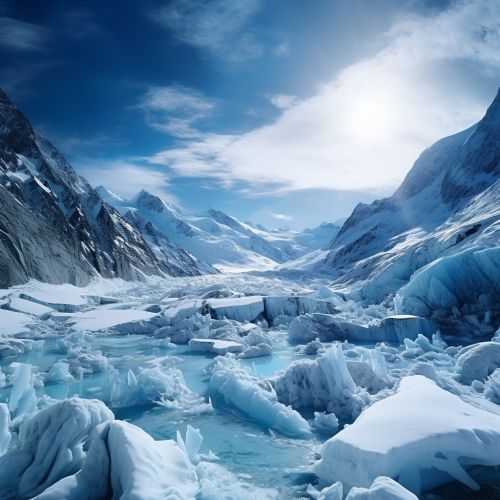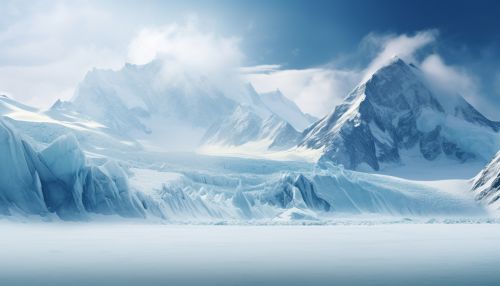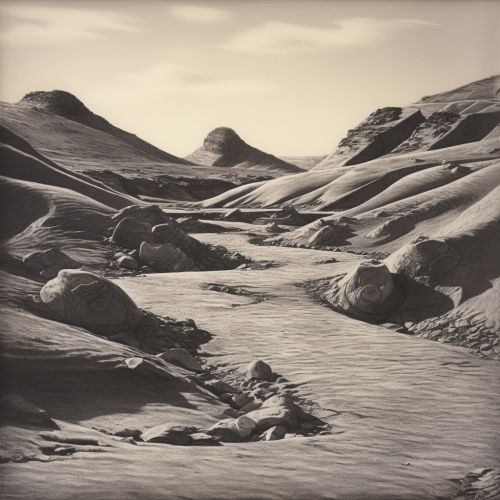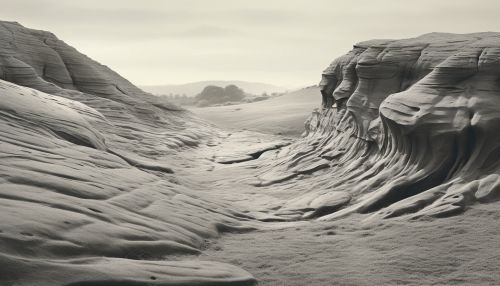Glacial geology
Introduction
Glacial geology is the study of the physical processes and sediments associated with glaciers and ice ages. This field of study aims to understand the formation, movement, and effects of glaciers on the Earth's surface. The study of glacial geology has significant implications for understanding climate change, sea level rise, and the shaping of the Earth's topography.
Formation of Glaciers
Glaciers form in areas where the accumulation of snow exceeds its ablation (melting and sublimation) over many years, often centuries. This process begins with the transformation of snow into firn, a granular type of snow that is more dense than fresh snow. Over time, the firn is compressed into ice, forming a glacier.


Types of Glaciers
There are several types of glaciers, each with unique characteristics and formation processes. These include:
- Alpine Glaciers: These glaciers form on mountainsides and move downwards through valleys. They are found in mountain ranges across the globe, including the Alps, the Himalayas, and the Rocky Mountains.
- Ice Sheets: These are the largest type of glacier and cover vast land areas. The two major ice sheets on Earth today are in Antarctica and Greenland.
- Ice Caps: These are mini ice sheets that cover less than 50,000 square kilometers. They form mostly in polar and subpolar regions.
- Icefields: These are extensive areas of interconnected valley glaciers.
- Cirque Glaciers: These form in bowl-shaped depressions, known as cirques, usually found on mountainsides.
Glacial Movement
Glaciers move through a process known as glacial motion. This movement occurs due to the immense weight of the overlying ice, which causes the ice at the base of the glacier to deform and flow. Glacial motion can be divided into two types: internal deformation and basal sliding.
- Internal Deformation: This occurs when the weight of the ice causes the glacier to deform and flow. This is the primary method of movement for cold-based glaciers.
- Basal Sliding: This occurs when meltwater at the base of the glacier lubricates the ice, allowing it to slide over the underlying rock. This is the primary method of movement for warm-based glaciers.
Glacial Erosion
Glaciers reshape the landscape through a process known as glacial erosion. This process involves the removal and transport of material by ice. There are two main types of glacial erosion: abrasion and plucking.
- Abrasion: This occurs when the glacier moves across the underlying rock, grinding and smoothing the surface. The abrasive action is carried out by debris embedded in the ice at the base of the glacier.
- Plucking: This occurs when the glacier freezes onto the underlying rock, and as the glacier moves, it plucks or lifts blocks of rock from the bed.


Glacial Deposits
Glaciers also deposit sediments in a process known as glacial deposition. These deposits, known as till, are unsorted debris that the glacier picks up as it moves. When the ice melts, these sediments are left behind, creating various landforms.
- Moraines: These are accumulations of dirt and rocks that have fallen onto the glacier surface or have been pushed along by the glacier as it moves.
- Drumlins: These are elongated hills of till that have been streamlined in the direction of ice movement.
- Eskers: These are long, winding ridges of sand and gravel that were deposited by meltwater streams flowing in and under the glacier.
Glacial Landforms
Glaciers create a variety of distinctive landforms through both erosional and depositional processes. Some of these include:
- Cirques: Bowl-shaped depressions where glaciers form.
- Arêtes: Sharp ridges that form between two glaciers.
- Horns: Pyramid-like peaks that result from the glacial erosion of multiple cirques.
- U-Shaped Valleys: Valleys carved by glaciers, which have a characteristic U shape, unlike the V shape of river-carved valleys.
- Hanging Valleys: These are smaller side valleys left high above the main glacial valley, often resulting in waterfalls.
- Fjords: These are steep-sided, deep inlets of the sea formed when a glacier cuts a U-shaped valley by ice segregation and abrasion of the surrounding bedrock.
Glacial Geology and Climate Change
The study of glacial geology provides valuable insights into past and present climate change. By studying the size and movement of glaciers, scientists can infer past climate conditions and predict future changes. Glaciers are particularly sensitive to changes in temperature and precipitation, making them important indicators of climate change.
